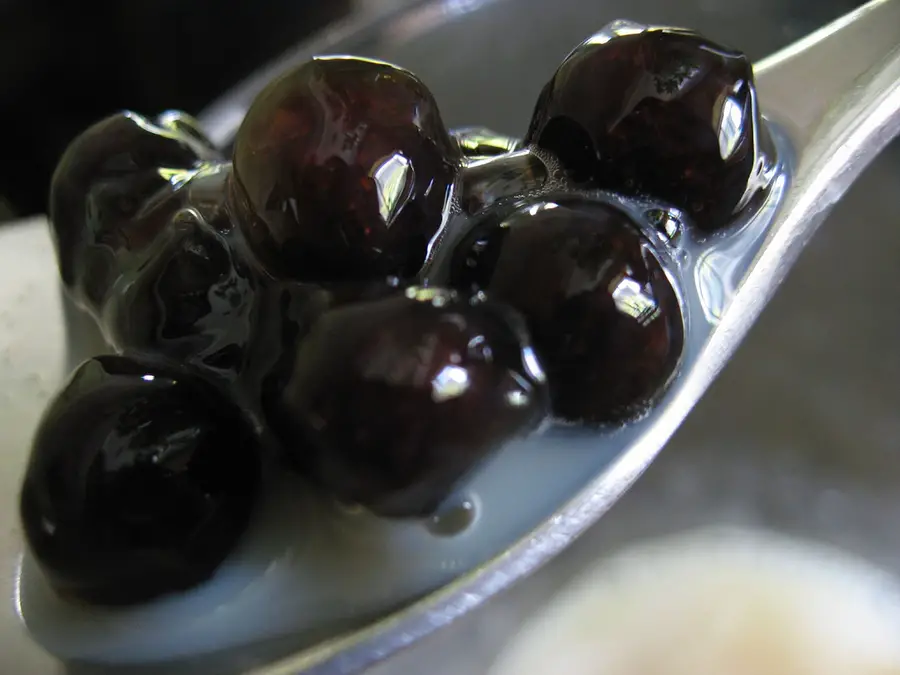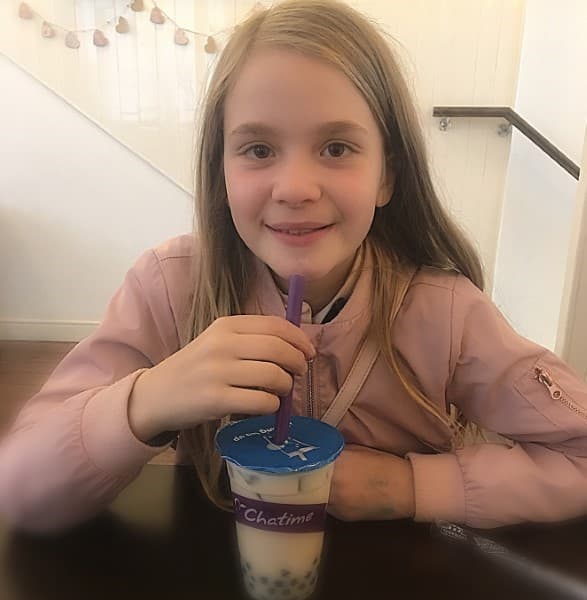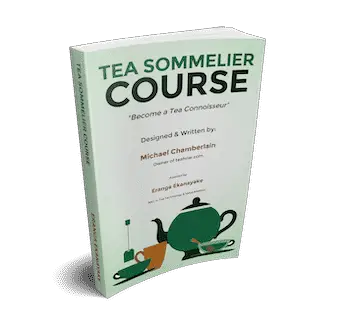Many people recognize Bubble Tea when they see it. It’s a unique beverage with Tapioca Balls at the base of the transparent cup and the extra wide straw that comes with it. Most people who try Bubble Tea Wow at the flavor, and yet it’s surprising how many people have still not tried it, more surprising still is those that have tried it likely don’t know that much about it.
Where Did the Name Bubble Tea Come From?
Bubble Tea is, without a doubt, the most widely used term. But it’s also known in various other forms, on the US East coast it’s Bubble Tea, whilst on the West Coast, it’s Boba Tea or just boba. In Taiwan, Asia, and other regions it’s pearl milk tea or bubble milk tea. It can also be called Tapioca tea.
Why Is It Called Bubble Tea?
Most people assume quite understandably, that the name bubble tea refers to the round bubble shaped tapioca pearls at the bottom of the cup. In actual fact, the term refers to the bubbles – or foam at the top. These are actually small pockets of oxygen, produced after the contents have been shaken in a cocktail shaker.
It should also be noted that, in Chinese, the word boba is made up of a combination of characters for both words bubble and big. In slang terms, these are used to mean “buxom lady“ or “big breast”. Perhaps this contributed to its success?
Who Invented Bubble Tea?
There are a number of stories and myths about how bubble tea was invented. It’s widely agreed that it was invented in the 1986 and is a Taiwanese Tea Based Drink.
In order to stand out from the competition in 1986, one Tea Stand owner, Tu Tsong-he, who owned Hanlin teahouse in Tainan, Taiwan. Decided to start serving his tea ice cold following the similar popular Iced coffee idea. A short time later it developed even further when a staff member added Tapioca pudding to the iced tea and they loved it. It became their top seller on the menu and soon other franchises began to imitate it.
Tapioca Pearls, or Balls

In the bottom of the cup are tapioca balls, which is a starch extracted from the cassava roots. The roots are used to thicken the agent in various ways. Cassava is actually a butty flavored root vegetable which is native to South America, which is surprising considering this drink originated in Taiwan. Tapioca has nearly twice as many calories at potatoes, so it’s high in energy due to the larger source of Carb and sugar contents. This makes it a perfect staple food in many developing third world countries.
Tapioca balls are most often white and translucent or black, which largely depends on the ingredients used. White tapioca pearls are made out of starch, chamomile extract, and caramel, whilst the striking black versions are made out of starch, sweet potato, and brown sugar. Tapioca pearls can be almost any color however, They will usually adopt the color of whichever drink syrup they’re soaked in, which typically happens as an overnight process.
Downsides to Tapioca balls
The downside to Tapioca balls is that there’s little by way of nutrients. The root is processed and formed into small balls. It cannot be eaten raw as it contains levels of cyanide, so it has to go through a detoxification process first.
If eaten raw, Tapioca can cause a number of harmful side effects, including nausea, headaches, vomiting, or in rare cases where enough is consumed it can cause paralysis and death.
Over time, the Tapioca balls in Boba tea have evolved. Although size can vary, initially they tended to be smaller pearls, the same kind sold in desserts at the time. These, over time, were increased to contain larger balls which you will most likely find in Boba Cafes today.
Flavors of Bubble Tea
Bubble tea has evolved in many ways since it’s popularity. Traditional bubble tea, which is still common today, particularly in Taiwan and surrounding regions contains oolong, black or green tea. Now, base flavors include Thai or Chai Tea and other flavorings are routinely added in the form of pulp, powder, or even syrup. Plus many fruity flavors have emerged since like Mango, or perhaps Mango and Pineapple, through to more sweet flavors like chocolate or caramel.
Most Bubble Teas Can Be Customized
bubble tea comes in many flavors and customizable varieties. Now the combinations are seemingly limitless. Even in terms of temperature, the tea flavor or type of milk available. It’s even available as a smoothie.
Don’t let the name ‘Milk Tea’ confuse you either. The varieties have gone beyond that too, to include non-dairy alternatives, such as coconut milk, soy milk, and even almond milk.
Is Bubble Tea Healthy?
Not really! Although it contains basic ingredients of Tea and milk, other ingredients make it heavy in Carbohydrates with no nutritional value, plus it’s loaded with added sugars from toppings. Depending on what type of milk you choose it could also be

fattening. Here’s a chart showing the nutritional values of bubble tea.
Having said that, it’s all relative. So it depends on what you define as healthy. There aren’t that many drinks that taste good, sweet and yet are wholly nutritionally good for you. A typical single serving of boba (1/4 cup) contains 140 calories and 33 grams of carbohydrates. According to an article by Boba Guys, it’s no less healthy than a Philz Coffee Mint Mojito or a Blue Bottle Coffee New Orleans style. So take from that what you will. See the image below which outlines typical values within a standard Bubble Tea Serving.
Risk of obesity
Fair to say drinking more than a few Bubble Teas a week will almost certainly increase the risk of obesity and contribute toward Diabetes. There is a drive now to incorporate lower sugar amounts in this beverage and to change the culture from a sugary sweet tea to a more holistic one. This includes the introduction of Vegan and low sugar teas.
In May 2011, a scandal broke out in Taiwan where the ingredient, Palm Oil, found in some drinks and syrups was replaced with a substance called diethylhexyl-phthalate (DEHP), DEHP is a chemical used to make plastics more pliable. It’s not clear how the chemical found it’s way into the Tapioca Pearls. DEHP is considered a potential carcinogen to humans. This is following researchers who found that it acted as a carcinogen in rats. However, they also noted that further studies would be required in order to test the effect of minimal doses of DEHP in humans, such doses would replicate what would occur through the casual drinking of bubble tea.
Where Should You Drink Bubble Tea?
There are dedicated Bubble Tea Cafe’s appearing all over the place. The craze has now moved over to the UK too. There are two types of Milk used in Bubble Tea, there is at the powder version or the real milk version. Try to avoid the powder version if possible. Even ask before you order it to make sure they’re using real milk. The taste experience is considered to be much better.
What Does Bubble Tea Look Like?

Remember, this is tea, but with a lot of milk added. With black pearls often likened to Passion Fruit. Otherwise, it’s a milkshake type drink that varies depending on what toppings you have added.
It’s invariably served in a transparent cup so you can see the fun contents and at professional outlets, it has a heat sealed lid so you can take it away with you for later. This lid is then punctured with the straw.
Look like a Bubble Tea Pro and start the right way – hold your thumb over the top end of the straw and give it a hefty stab into the lid. This should prevent any sudden flow up the straw. After all, you want to drink it not wear it. You will also look like a pro!
What’s Bubble Tea like to Drink?
It’s different. For one thing, the wide straw seems strange at first, as you wouldn’t normally expect to drink from a fat straw. You also wouldn’t expect to suck semi-solid food into your mouth through a straw. So I’d definitely recommend drinking it slowly – unless you like the idea of choking in a public place.
You should not serve Boba Tea to children aged 4 or under. To be on the safe side I’d recommend making that 6 or under to prevent any chance of a choking hazard and warn them beforehand to drink it slowly.

Once you’ve gotten over the initial weirdness of the straw thing, then you’ll be hit with a cool, sweet, creamy-textured milky-tea taste, along with the taste of whatever toppings you added. My daughter loves it!
The Tapioca Balls can be eaten, they have a chewy consistency often described as falling somewhere between Chewing gum and Jelly
Parting thoughts…
I think bubble tea is certainly worth trying and having as an occasional treat. But also that it should be treated as part of a controlled diet and not a routine.
Meaning trying not to go every day. As long as you’re being sensible then don’t be overly concerned about the health benefits as the same negative points go for so many other products on the market. For me this is a guilty pleasure, it’s not perhaps the most cultured drink available, but for me, it’s a guilty pleasure that, having discovered it, I’d find it hard not to have the …oh …so occasional little treat!
I hope this has helped you gain some understanding of What’s in Bubble …or Boba Tea, or what is in Bubble tea, and what the facts about Bubble Tea are.
Let me know in the comments below what you usually call it – just in case I missed a name or two. I’d also really like to know your favorite flavor too. And check out my tea wares and my Tea Sommelier Course…

Take the fast track and become a tea connoisseur
Whether for enjoyment or considering a career as a tea sommelier. This course has everything you need to enhance your tea knowledge and tea-tasting skills.
This course keeps it simple with step-by-step tea tasting and easy reference guides
For pleasure, or as a precursor to a career in the tea industry. Find out what tea sommelier actually does, their career paths, and what they earn.

Find out more about the Teahow Tea Sommelier Course!

Find out more about the Teahow Tea Sommelier Course!

